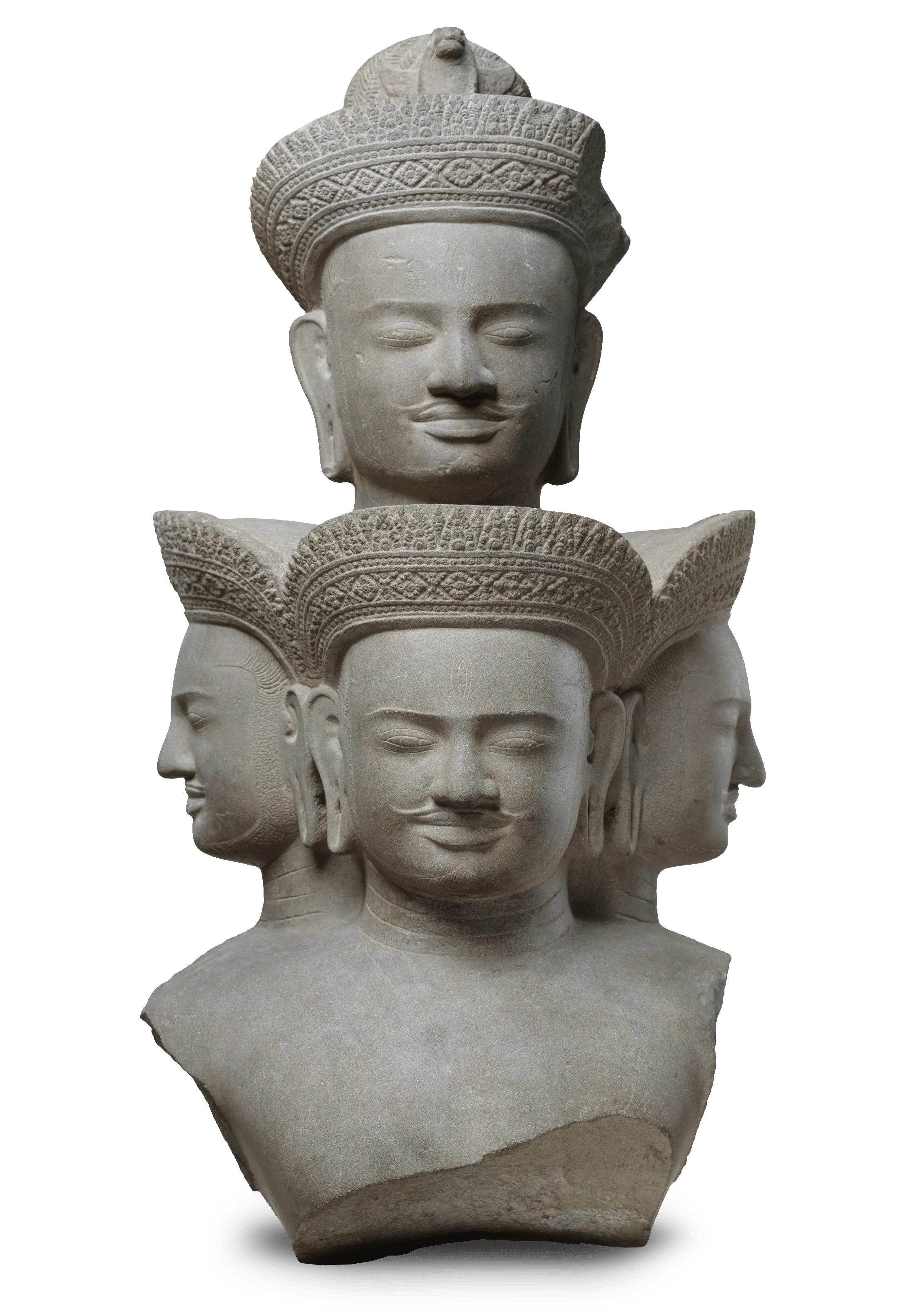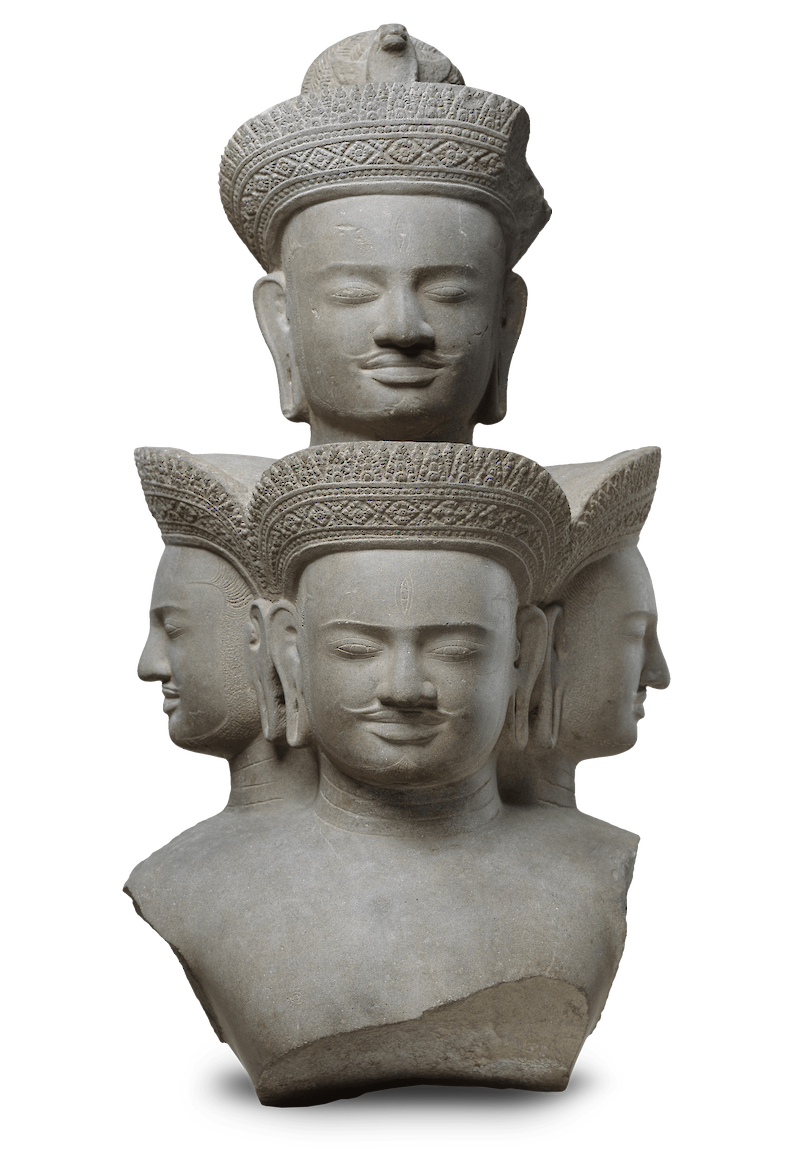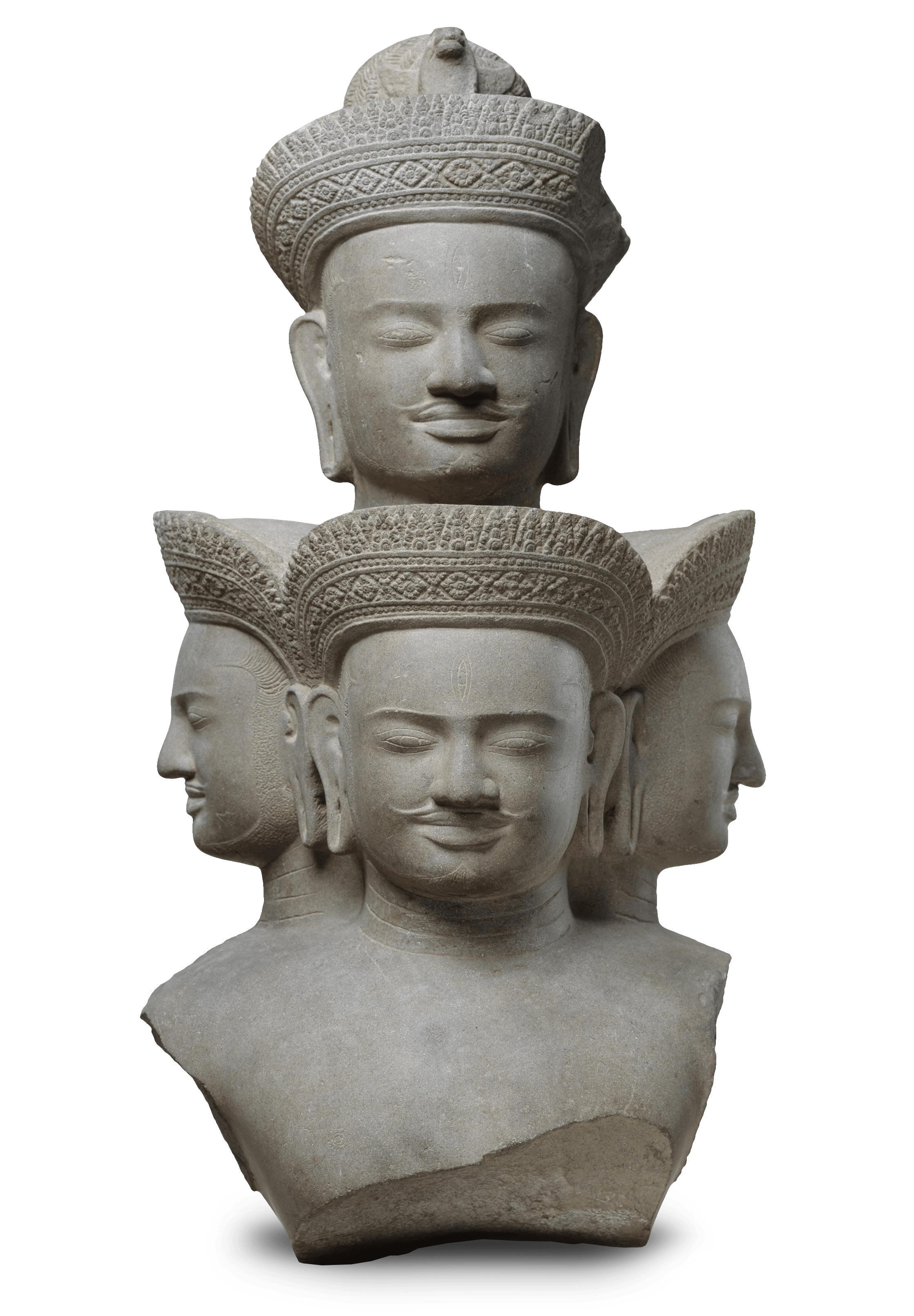


A five-headed god may be a disorienting concept to western viewers, so let’s break it down. Meet Shiva, the Hindu god of destruction. Shiva is one of the three supreme Hindu gods, the Trimūrti. In this bust, each of Shiva’s heads is a metaphor, representing one of his five aspects: Sadyojāta is fearsome face, Vāmadeva the face of healing, Aghora the face of knowledge, Tatpuruṣa the face of soul and meditation, and Īśāna is the face of the cosmos. Each aspect is also associated with a direction and an element. Shiva’s five aspects are:
Sadyojāta - West, Earth
Vāmadeva - North, Water
Aghora - South, Fire
Tatpuruṣa - East, Air
Īśāna - North-east, Cosmos
